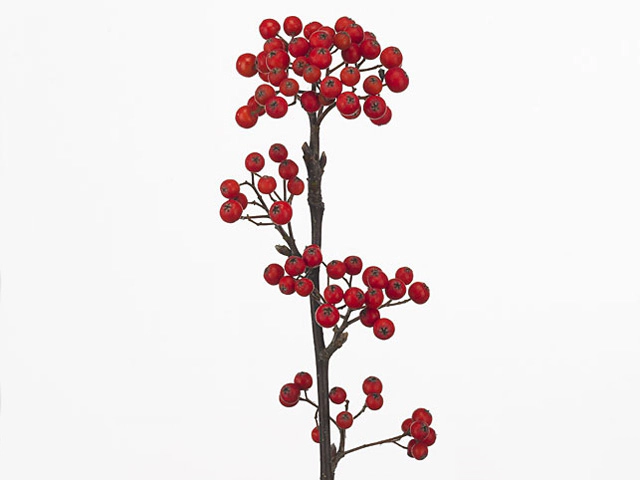Sorbus hybrida 'Gibbsii'

| Leaf arrangement | spreaded |
| Life span | Middle long (50 - 200 years) |
| Fruit type | Berry |
| Fruit shape | Rounded-flattened |
| Leaf type | Foliage leaf |
| Winter hardness | Good (USDA-zone 5, 6) |
| Soil fertility | No special demands |
| Inflorescence | Corymb |
| Leaf duration | Deciduous |
| soil pH requirement | Indifferent |
| Light conditions | Semi-shades; Sunny |
| Growth rate | Normal; Fast |
| Leaf division | Odd; Pinnately lobed |
| Plant, growth type | Erect |
| Flower sex (distribution) | Monoecious (flowers bisexual) |
| Application / Suitable for | Avenue tree; Park tree; Street tree |
| Sensibilité au sel d'épandage | Sensitive |
| Autumn color (notable) | Yellow |
| Toxicity (if consumed) | Not or barely |
| Moisture requirements | Dry |
Sorbus hybrida 'Gibbsii', also known as Gibbs' whitebeam, is a versatile and attractive tree that is well-suited for various applications such as avenue, park, and street planting. With its unique characteristics and adaptability, it is a popular choice among landscapers and gardeners.
One notable feature of Sorbus hybrida 'Gibbsii' is its spreaded leaf arrangement. The foliage is deciduous, displaying a vibrant yellow color during the autumn season, adding a touch of beauty to any landscape. The leaf type is foliage, with pinnately lobed divisions, giving the tree an elegant and intricate appearance.
This tree has a good winter hardness, making it suitable for USDA hardiness zones 5 and 6. It can withstand cold temperatures and harsh climates, ensuring its longevity and durability. The life span of Sorbus hybrida 'Gibbsii' is considered middle-long, lasting anywhere from 50 to 200 years, making it a long-lasting investment for any outdoor space.
The fruit of Sorbus hybrida 'Gibbsii' is a rounded-flattened berry, attracting wildlife and adding visual interest to the tree. Though not toxic, the fruits are not typically consumed by humans. The tree displays its beautiful inflorescence in the form of corymbs, enhancing its overall appeal and attracting pollinators.
When it comes to soil fertility, Sorbus hybrida 'Gibbsii' does not have any special demands. It can thrive in a wide range of soil types, making it a versatile choice for different landscapes. The tree also shows indifference to soil pH, further adding to its adaptability.
In terms of light requirements, this Sorbus hybrid prefers semi-shaded to sunny conditions, making it suitable for various locations within a garden or outdoor space. It has a normal to fast growth rate, allowing for relatively quick establishment and development.
Sorbus hybrida 'Gibbsii' grows erect, displaying a strong and upright growth habit. It is a monoecious tree, meaning it produces bisexual flowers. This characteristic adds interest and diversity to the tree's overall appearance.
However, it is worth noting that this particular Sorbus hybrid has some sensitivity to salt spreading. It is best to avoid planting it in areas that are regularly subjected to salt application, such as along roadways or sidewalks, to prevent any potential damage or decline in health.
Overall, Sorbus hybrida 'Gibbsii' is a versatile and visually appealing tree that can enhance any landscape. With its elegant foliage, attractive inflorescence, and long lifespan, it is a valuable addition to parks, streets, and avenues. Its adaptability to different soil types and light conditions further adds to its value, making it a popular choice among landscape designers and garden enthusiasts.
Market availability index by month:
| Jan. | Feb. | Mar. | Apr. | May | Jun. | Jul. | Aug. | Sep. | Oct. | Nov. | Dec. |
|---|---|---|---|---|---|---|---|---|---|---|---|
| 3 | 3 | 3 | 3 | 4 | 3 | 3 | 3 | 3 | 4 | 4 | 3 |